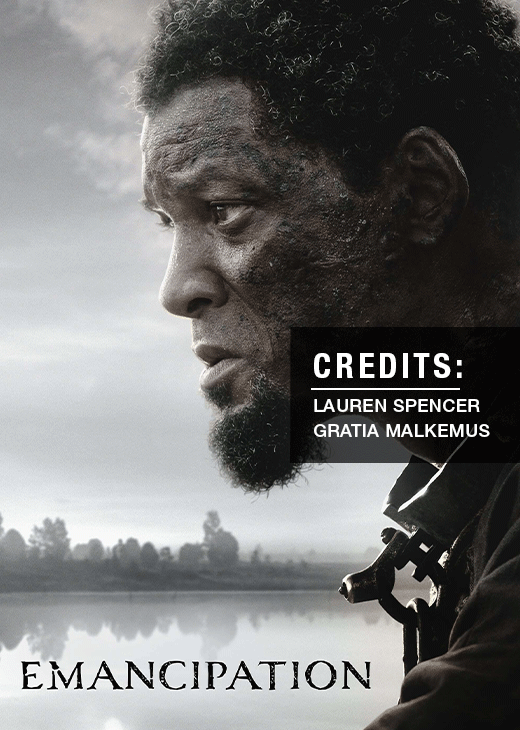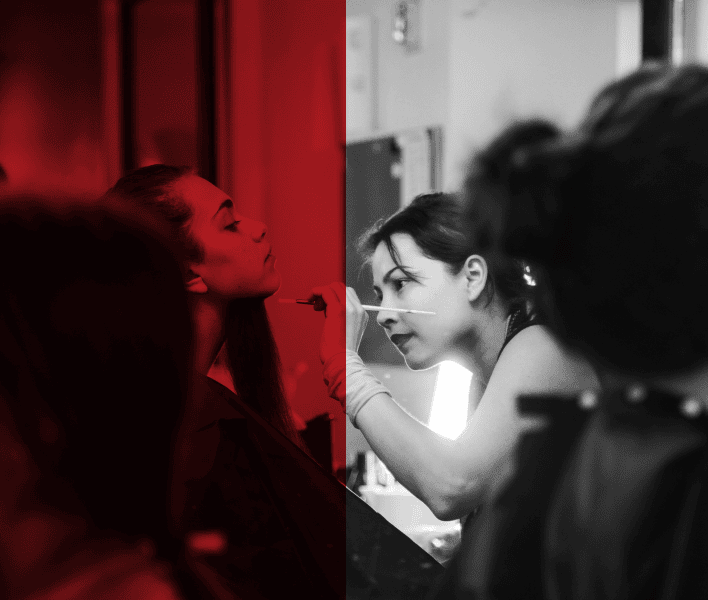In special effects makeup, the key to creating lifelike prosthetics is starting with accuracy. When it comes to designing custom prosthetic pieces for the face, such as character transformations, wounds, or creature features, the process begins with a face cast.
From horror films to sci-fi series, character transformations often depend on perfectly fitting facial appliances. Without them, even the most talented MUA risks poor fits, warped designs, or awkward applications.
In this blog, we’ll walk you through why facial casting is important in SFX makeup and how to make one like a pro.
Let’s dive in.

What Is a Face Cast in SFX Makeup?
A face cast is a three-dimensional mold taken of a person’s face using materials like alginate and plaster bandages. The mold records even the finest features, such as skin texture, wrinkles and bone contours, resulting in an accurate replica of the actor’s face.
SFX makeup artists use this life-sized model to sculpt prosthetic pieces that fit precisely. That accuracy is crucial when building effects like:
- Prosthetic wounds and scars
- Creature masks or full-face appliances
- Aging transformations
- Hybrid or sci-fi characters
- Anatomical simulations
Unlike a one-size-fits-all approach, face model casting allows you to work with the unique geometry of a specific face, leading to more believable and comfortable results on set.
Why Is Face Casting Essential for Prosthetic Makeup?
Precision matters in prosthetic makeup. When a piece doesn’t align perfectly with the face, it can appear stiff, shift during movement, or even peel off mid-scene.
Here’s why a facial cast is so critical:
1. Custom Fit for Sculpting
Once you have a plaster copy of the actor’s face, you can sculpt directly onto it. That means the prosthetic will match facial contours perfectly – no guesswork.
2. Reduces On-Set Application Time
Custom-fit prosthetics are quicker to apply and require less adjustment. This is crucial on film sets, where every minute counts.
3. Comfort for the Performer
Poorly fitted prosthetics can be uncomfortable or even painful. A proper face cast helps avoid pressure points and skin irritation.
4. More Realistic Movement
A prosthetic built on a personalized face cast will move more naturally with the actor’s expressions, resulting in more immersive performances.
What You’ll Need: Tools and Materials
Creating a face cast isn’t expensive, but it does require specific materials to ensure safety and quality. Here’s a list of essentials used by industry professionals and students at top SFX schools.
Materials:
- Alginate – A fast-setting, skin-safe molding compound
- Plaster bandages – Used to form the sturdy outer layer, also known as the mother mold
- Bald cap or cling wrap – To cover hair
- Petroleum jelly or release cream – For eyebrows, lashes and beard hair
- Mixing bowl and spatula – For alginate prep
- Measuring cups & water spray bottle
- Straws (optional) – For nostril breathing
- Gloves, towels, cape and drop cloth – To keep things clean
- Hydrocal plaster or Ultracal – Used to create the final positive cast
- Silicone casting materials – For reusable molds
- Clay – To smooth surfaces before sculpting
Having everything ready before starting is crucial. Alginate sets fast and there’s no time to fumble once it’s on the face.
Step-by-Step: How to Create a Perfect Face Cast
Face casting is a detailed process that requires teamwork, patience and precision. It’s always a two-person job – one person to act as the model and another to apply the materials. Never attempt this alone, especially with someone inexperienced.
Step 1: Prepare the Subject
To begin, have your subject seated comfortably in a reclining chair. Their hair should be tied back and fully covered with a bald cap or plastic wrap to avoid interference with the molding materials. A thin layer of petroleum jelly or release agent should be applied to the eyebrows, eyelashes and any facial hair to prevent the alginate from sticking.
Drape a cape or towel over their shoulders to keep their clothing protected and to catch any drips. Most importantly, explain the entire process beforehand, especially the part about breathing through the nose. Ask the model to keep their eyes closed and face relaxed so the cast doesn’t pick up any unwanted lines, wrinkles, or muscle tension.

Step 2: Mix and Apply Alginate
Next, prepare the alginate by mixing it with cold water, following the instructions on the packaging. It sets quickly, so efficiency is key. Starting at the top of the forehead, begin applying the alginate downward across the face, using your hands or a spatula to smooth it over the contours of the cheeks, chin and around the mouth.
Always leave the nostrils open to ensure your subject can breathe easily. A consistent layer, about a quarter inch thick, ensures durability and captures skin detail effectively. Alginate is excellent at reproducing fine features, such as pores, wrinkles and bone structure, making it ideal for prosthetic makeup.
Step 3: Build the Support Shell (Mother Mold)
While the alginate is still flexible, a rigid outer shell, often called the mother mold, needs to be applied to hold its shape. This is done using plaster bandages that are dipped in water and layered across the face.
Overlapping the strips adds strength and at least two layers are recommended. It’s important to cover the entire alginate surface while keeping pressure minimal to avoid deforming the shape. The plaster sets in about 10 to 15 minutes, creating a sturdy casing that locks the negative mold in place.
Step 4: Demolding
After the shell has set, gently lift the edges of the plaster bandages to begin removal. Instruct the model to carefully move their face to loosen and detach the cast. The mold should then be lifted off the face slowly and in one clean motion.
Place the complete mold in a clean, secure area and inspect it for any thin areas, air bubbles, or missing details. These flaws can interfere with the accuracy of the final prosthetic piece.
Step 5: Create the 3D Face Copy for Sculpting
Once you’ve removed the mold from the model’s face, you’ll be left with a hollow shape that holds all the details of their features. This is what you’ll use to create a solid copy of the face. First, place the flexible alginate mold back into the hard plaster shell so it keeps its shape. Then, pour a thick plaster mixture, like Ultracal or Hydrocal, into the mold. Gently tilt and rotate it to make sure the material spreads evenly and fills every detail.
After it fully sets, usually within 30 to 60 minutes, peel off the outer layers. What you now have is a solid, life-sized copy of the person’s face. This 3D model will be your base for sculpting custom-fit prosthetics.
Watch this hands-on tutorial to see how professional prosthetics are made:
Common Face Casting Mistakes (and How to Avoid Them)
Even experienced artists can mess up a cast. Here’s what to watch out for:
| Mistake | Why It’s Bad | How to Fix It |
| Using expired alginate | Poor texture capture | Always check dates before use |
| Not applying release agents | Hair pulling or skin damage | Never skip jelly on lashes/brows |
| Leaving nostrils covered | Dangerous breathing risk | Always leave nose holes clear |
| Waiting too long to add plaster | Alginate shrinks or deforms | Apply plaster bandages immediately |
| Inconsistent alginate layer | Misshapen prosthetics | Apply quickly and evenly |
Take your time, the goal isn’t speed, it’s accuracy.
Related Blogs You Might Like:
- How to Apply Latex & Vinyl Bald Caps in Character Makeup
- SFX Burn Makeup Techniques Every Artist Should Know
- What Are Prosthetic Masks in Special Effects Makeup?
Face Cast vs. Life Cast: What’s the Difference?
Both terms come up often in SFX circles and they serve similar but distinct purposes.
A face cast focuses solely on the face and is typically used for creating facial prosthetics. This method is quicker to perform and requires fewer materials, making it ideal for projects that only involve the front of the head or facial features.
In contrast, a life cast involves molding the full head or other body parts. It is often used for more complex creations like creature suits, body armor, or other full-body effects. Because of its broader scope, it takes more time and demands more materials than a face cast.

Learn Face Casting Like a Pro at Cinema Makeup School
If you’re serious about mastering special effects makeup, Cinema Makeup School is where your journey begins. As part of the renowned Cinema Art College Corporation, we don’t just teach face casting; we train future professionals to excel in it.
Our Special Effects Makeup Course includes:
- Professional training in face casting and life casting
- Full workflow from casting to sculpting to final application
- Real-world, camera-ready projects
- Access to industry tools, instructors and materials
- Portfolio-building assignments that mimic real-world conditions
By the end of the course, our students don’t just understand prosthetic design, they can do it on deadline, on budget and on-camera.
Making a face cast may look intimidating, but once you understand the process, it becomes one of the most satisfying parts of SFX makeup artistry. It’s technical, tactile and totally transformative. Whether you’re sculpting a demon or designing a realistic wound, a great prosthetic begins with the perfect cast of face.

























































